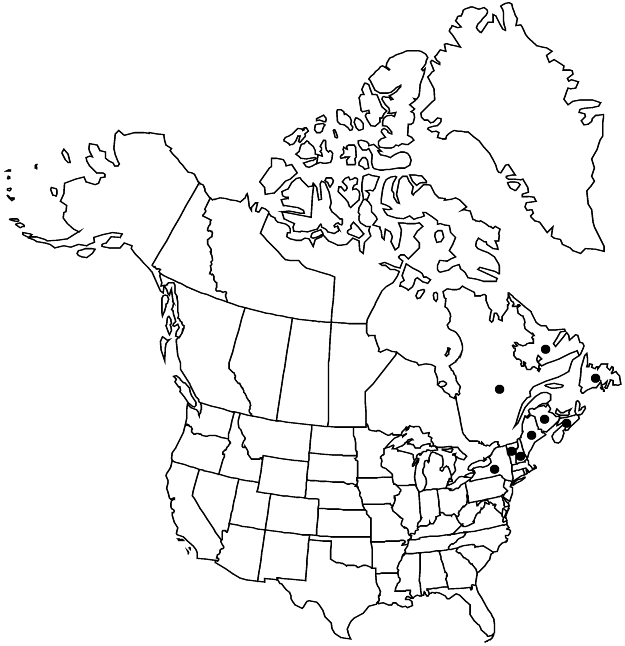familyEricaceae
subfamilyEricaceae subfam. Vaccinioideae
genusVaccinium
sectionVaccinium sect. Cyanococcus
speciesVaccinium boreale
Vaccinium boreale
Amer. J. Bot. 48: 200. 1961 ,.
Common names: Northern blueberry sweet hurts bleuet boréal
Endemic
Plants forming small, dense colonies, 0.1–0.9 dm, (superficially rhizomatous); twigs green, (delicate), angled, (intricately branched), hairy in lines. Leaves deciduous; blade bright green, narrowly elliptic, 8–21 × 2–6 mm, membranous, margins sharply, uniformly serrate, surfaces usually glabrous, eglandular abaxially. Flowers: calyx green, glaucous, glabrous (sometimes ciliate); corolla white to greenish white, cylindric, 3–4 mm; filaments ciliate. Berries blue, glaucous, 3–5 mm diam., glabrous. Seeds 10–30, ca. 1.1 mm. 2n = 24.
Phenology: Flowering late spring–early summer.
Habitat: Headlands, open, rocky uplands, alpine heaths and meadows, forest-tundra. 0-2000 m
Distribution

N.B., Nfld. and Labr., N.S., Que., Maine, N.H., N.Y., Vt.
Discussion
Selected References
Lower Taxa
None.